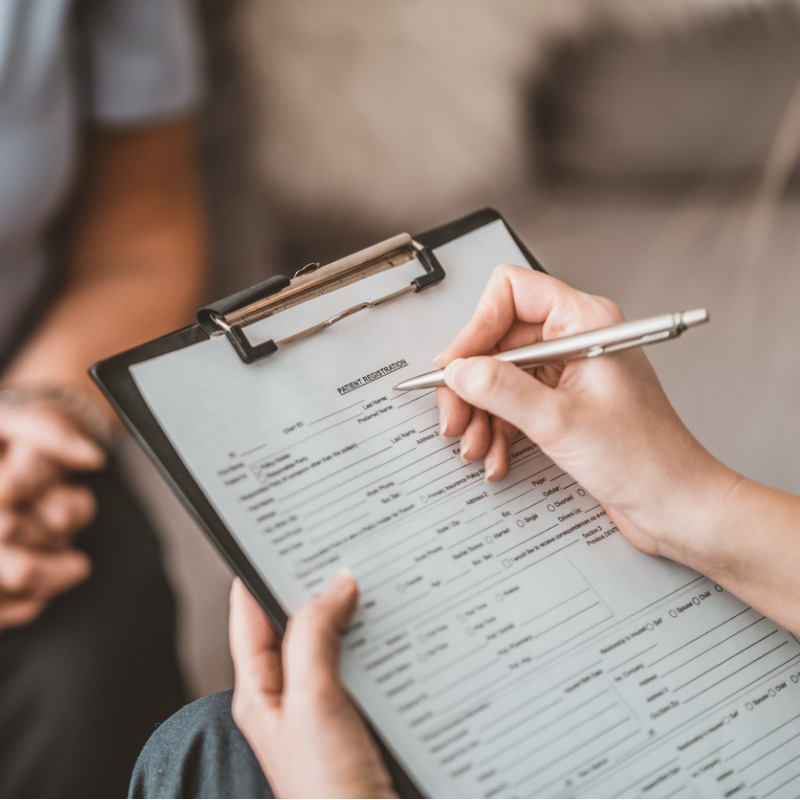September 7, 2022
Increase Patient Satisfaction and Staff Efficiency with No-Paper Paperwork

We’ve all been there—you walk into a waiting room and are handed a clipboard and a pen. “Please complete these,” instructs the staff. The next 10 or 15 minutes are spent completing information manually and sometimes redundantly.
This traditional method of collecting information from patients on paper has many drawbacks, including frustration, mistakes, data security risks, and waste of precious resources (human and environmental). With paper, patients must re-enter the same information—again and again—on multiple forms. Unclear handwriting or accidental omissions means patients often introduce challenges to correct data entry. And busy staff also can introduce errors simply due to the press of competing responsibilities. All of this creates challenges for providing the best care and patient experience.
Why not provide patients and staff with a “paper-less” paperwork option instead?
A no-paper process means patients can conveniently complete digital forms at their own convenience prior to appointments. Not only does this increase the likelihood of more accurate information, it creates a better patient experience by allowing them to self-serve. When information-gathering is automated and digitized, denied insurance claims due to incorrect information decrease. And it’s double-win for improving the patient experience because staff have greater availability to focus on patient interactions.
Digital technology eliminates human error and ensures that data capture is highly accurate and complete from the start. It’s also surprisingly easy. Technology, for example, can prepopulate forms with patient information providers already have on file—before a patient is asked to complete additional forms. By prepopulating common information fields, the patient experience is improved due to time savings and a sense that their provider knows them and is using their information appropriately. It also increases the likelihood that all forms will be completed before the appointment.
Another time-saving digital technology to consider is optical character recognition (OCR), which can automatically scan documents and pull off critical data—birthdates, such as driver license numbers and policy numbers—as part of the appointment check-in process. OCR increases the accuracy of collected data by transferring it directly from the source to a providers’ digital systems.
Paper-less paperwork improves accuracy and the patient experience, while reducing strain on busy staff members. You will save money on paper (and help the environment in the process), increase data security and even make audits easier. Using digital technology in this way also communicates to patients that your practice is modern, efficient and committed to making their experience convenient and connected.